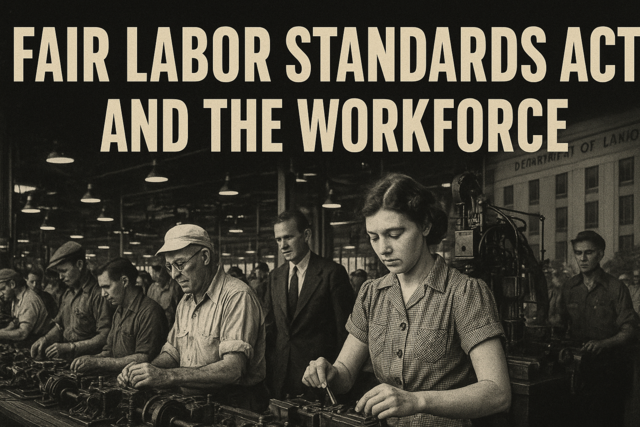Life is filled with decisions. Often during the day we make decisions involving other people. A common problem that is solved between two or more parties is where to eat lunch. A simple decision solves this sometimes difficult issue. Other decisions have a more dramatic impact, such as which contractor to hire for a construction job. This problem is a bit more complex and has severe consequences if the wrong decision is made. In both cases, a decision had to be made to resolve the issue, and the same repertoire of decision-making skills was used.
With so many issues needing decisions each and every day, you would think people might have a large arsenal of skills for negotiating; but most people have surprisingly few skills to fall back on in negotiations. And the lack of skills is why the phrase, "My way or the highway," frequently is used by various leaders when faced with decision choices. It's not the fact the leader thinks he has the best solution; he blurts the phrase out because he did not like your choice and he does not know how to reach another alternative � so it's, "My way or the highway."
With the all or nothing approach to problem solving or decision making, it is obvious the big dog gets the bone. This approach defines negotiation as "getting what you want at the other's expense." Some would argue this is not negotiation but strong-arming your opponent into submission; but, in truth, it is hardball negotiations. There are a few inherent problems with this style of negotiating.
It can be ineffectual. Stonewalling and standing your ground can result in numerous meetings that waste a lot of time and cause the true issue to become buried in trivial squabbles. To cite an example of this on a large scale, review the history of talks to end the cease-fire between North and South Korea. The armistice signed in 1953 has created the longest cease-fire in world history. But it has not created true peace. Because neither side is willing to negotiate, many squabbles have erupted. The South says the North, at times, enters the demilitarized zone with machine guns that threaten their safety. This triggers a firefight of sorts: The South says the North instigates to hide their tunnel-digging projects in the DMZ; the North counters by claiming the South stages war game scenarios in the DMZ that threaten their safety. Because of this, the North then threatens to cut the phone line to the Pammunjon, the village in the DMZ where peace talks are staged.
As you can see, this negotiating process generally is fruitless. When an agreement is made using this style of negotiating, ill-advised agreements can be reached, since no other solutions were explored that possibly could better serve everyone, except the two ideas on the table � "Yours and Mine."
Finally, the "standing my ground at all costs" can ruin relationships. It creates unwarranted stress, acrimony, ire, indignation, frustration, and utter resentment between all parties. Harsh feelings can result, where neither party will speak with each other, much less try and do business with the other ever again. Unfortunately, this frequently happens in business. Costco recently announced it was cutting ties after 16 years with American Express, which had an exclusive deal with the warehouse retail giant that accounted for 8 percent of the credit card's revenue. Both sides could not reach an agreement, so Costco expressed its dissatisfaction by deporting American Express and granting an entry visa into its 474 locations to the more commonly used Visa card.
So standing your ground is one solution � although not necessarily a good solution � to solving a problem.
Working Together
This is more along the lines of a collaboration form of problem solving, and negotiating can play a role. With this approach, the separate parties look for common ground, instead of attempting to reach an agreement from polarizing positions.
When finding an interest both sides can agree on, motivation is generated. With motivation, both sides are energized to find a solution to an issue, since both now have a need or a concern they feel must be met. When a person's position has been stripped away and their commitments, values, and wishes are exposed, the door of opportunity has been cracked open for a solution to be found. This is where collaboration can locate the answer. This type of a solution has greater potential to create satisfying and positive agreements that build successful relationships, since an agreement was not made, but solutions were implemented that had both party's interests at heart. With that in mind, let's break down this process and examine its steps to negotiating success.
Be Prepared
There is nothing worse that stepping into a classroom for a test and you never cracked a book. It's like getting up to make a major presentation that you decided to give "off the cuff." In both scenarios, you chose the lazy way out and both are like committing suicide. Those tactics will get you nowhere, except a free pass to the failure line. With the constant demands placed on your time, it's easy to skip the preparation step. But it is necessary for success, and for a collaborative problem-solving session to be a success, a number of areas must be looked at before the showdown or discussion begins.
Know your interests � What is your position, or interests? These are your root needs, wants, desires, and values. This is your solution to the problem. To learn your root interests, some questions that need to be addressed include:
-
Why do I want this?
-
Is this interest in my value system?
-
Is this need selfish, or is it beneficial to a wider audience?
-
Could I do without meeting this need and still be satisfied?
People tend to have more than one interest, when it comes to a problem. Sometimes an issue will cover a wide array of interests. A common issue that has met a lot of controversy in society today deals with medical care. There are many interests involved in this one issue. There's the issue of premiums � the monthly costs. Then there is the interest of being able to choose a provider. Another interest involved in this issue involves what is covered under the medical care, and if any pre-existing conditions will be insured. These interests just touch the tip of this iceberg, but it is a great example of how one issue can touch a person's life, or an organization's interests, in many arenas.
With that premise in mind, to prepare for the collaborative session, everyone should list their interests and then prioritize them; figure out what is important and what is not so important. Ask yourself:
-
Which of these interests can I not live without?
-
Are any of these easily dismissed?
-
Which of these cannot be compromised, because it would violate my values?
-
What is the most critical, that no agreement can be reached if it's not included?
With these questions answered a list ranking each interest can be written.
Anticipate Their Interests
This step almost meets the criteria of "heading it off at the pass" � almost. This is when a reminder is needed � collaborative problem solving is where everyone tries to satisfy the interests of all interested parties, so it is imperative you spend time considering the other parties' interests, too. To consider their interests, look at the issues being discussed from their viewpoint. Ask the following questions:
-
What are they really wanting?
-
What interests are they trying to satisfy?
-
How do they see this issue?
-
Why do they perceive the problem in this light?
Once those questions are answered, list their interests, and then compare it to your own listing, and look for common ground. At the same time, look over the lists and brainstorm some ways many of these interests can be met within everyone's known values. Look for the options that aid everyone involved.
Equitable Stock
Looking at the list, it is inevitable there will be some interests that are on opposite sides of the field. At first glance, it will look as if many of the interests cannot be compromised and an agreement is as far as the north is from the south. The distance is too great, and collaboration in this instance will not make a difference � there is no equitable stock between the two parties involving certain issues. In collaborative problem solving, the goal is to locate solutions to meet as many of everyone's interests as possible. Of course, there are those times where interests are not compatible. When this occurs, the solution is to generate a standard all participants can agree upon that solutions can be measured against.
For example, the government frequently attempts to set up standards that solutions can be measured against � especially when it comes to budgets, taxes, and employment issues. Frequently, the measurements are last year's statistics or a comparison to civilian business standards.
Businesses look for standards when negotiating pay and benefits. Often they will use their competition's employment packages as a standard, and other times they will look at the cost of living in the area, and the overall income median for the community where they are located. Other times, their comparison charts come from unions.
As you can see, there are a number of areas where comparison information can be obtained. It's just a matter of doing a little research and coming up with criteria everyone can agree to as the standard when measuring compromises on interests.
Keep Your Ears Open, Mouth Shut, and Mind Clear of Biases
It's now time to get down to the business of collaborative problem solving. The prep work has been accomplished. You have listed and prioritized all your interests. Their interests have been identified. Workable solutions have been brainstormed and a ruler of equitable stock has been created. So, now you are left with three things you need to walk into the door with, and these may be the three most difficult things you bring to the table. The first item is open ears, ready to listen to everything the other parties have to say. This does not mean listen while formulating your rebuttal, but openly listen to what is being said, what is being implied, what is being hinted at as their true interests and values, and actually listening to what is not being said, too. There are times when what is not being said is more important than what is being said -- so listen.
The next item that you also must bring to the session is a closed mouth. If your mouth is open, it is a given you are not listening. If you are not listening, you are not learning, and if you are not learning, you do not have a clue what the other side's interests are -- so collaborative problem solving cannot take place. This is where it is wise to be slow to speak and slow to anger. At this junction, it is best to empathize with the other parties and place yourself in their shoes. This keeps emotions in check and allows you to hear their side, so you have a better understanding of what is needed to reach agreements on issues. Trying to get along goes a lot farther than the "my way or the highway" approach, when negotiating.
When All Else Fails � Re-evaluate
Okay, the issues have been defined and everyone agrees they are a challenge that needs to be solved together. Both sides have taken the time to educate the other on their interests, and everyone has brainstormed ways to create value to all the various solutions.
There are multiple solutions and the equitable value ruler has been met on many of the ideas, but an agreement cannot be reached. Both sides are stuck somewhere in the middle. This is where it's time to take a step back, and once again, get re-acquainted with everyone's interests, values, and known criteria. Then, repeat the solution evaluation and openly discuss the pros and cons of each, taking note where everyone has agreements. Select and modify the various solutions on the ones where most interests are met. Where there is a stalemate, use objective criteria that meets most of everyone's interests to reach an agreement.
Once this has been done, everyone should collaborate on an implementation of the agreement, and a review process for monitoring the agreement's effectiveness.

























